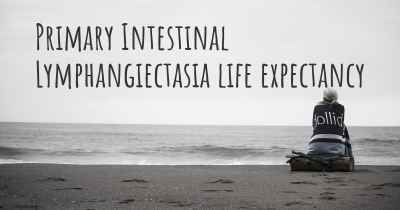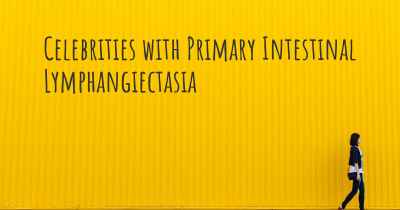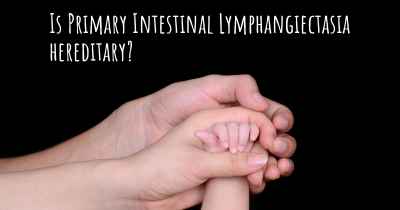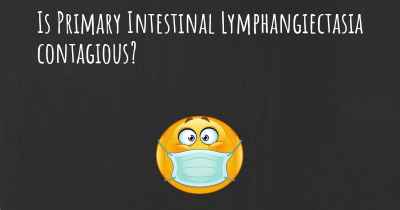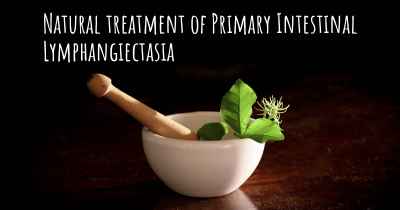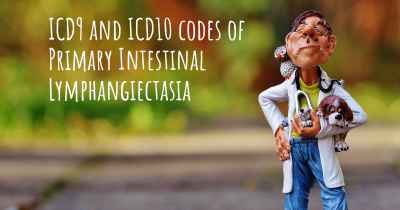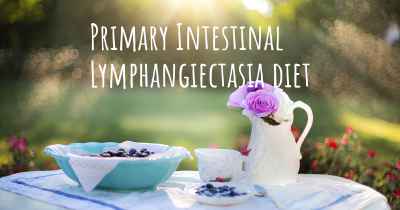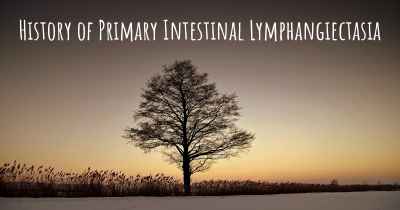Living with Primary Intestinal Lymphangiectasia. How to live with Primary Intestinal Lymphangiectasia?
Can you be happy living with Primary Intestinal Lymphangiectasia? What do you have to do to be happy with Primary Intestinal Lymphangiectasia? Living with Primary Intestinal Lymphangiectasia can be difficult, but you have to fight to try to be happy. Have a look at things that other people have done to be happy with Primary Intestinal Lymphangiectasia
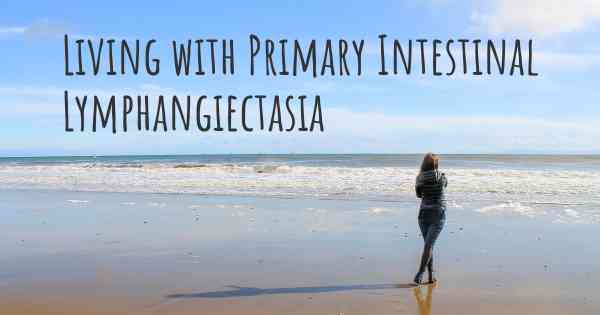
Living with Primary Intestinal Lymphangiectasia
Primary Intestinal Lymphangiectasia (PIL) is a rare disorder characterized by abnormal dilation of the lymphatic vessels in the small intestine. This condition can lead to various symptoms, including abdominal pain, diarrhea, malnutrition, and swelling in the limbs. While living with PIL can present challenges, there are strategies and lifestyle adjustments that can help individuals manage their condition effectively.
1. Seek Medical Guidance
It is crucial to consult with a healthcare professional who specializes in PIL to develop a personalized treatment plan. They can provide accurate diagnosis, monitor your condition, and offer guidance on managing symptoms and preventing complications.
2. Follow a Specialized Diet
A key aspect of managing PIL is adopting a specialized diet that helps reduce symptoms and ensures proper nutrition. Your healthcare provider or a registered dietitian can create a meal plan tailored to your specific needs. This may involve consuming a low-fat, high-protein diet with medium-chain triglycerides (MCTs) to aid fat absorption. Additionally, it may be necessary to restrict certain foods that are difficult to digest, such as fatty foods and foods high in fiber.
3. Adequate Nutritional Support
Since PIL can lead to malnutrition, it is important to ensure you receive adequate nutrition. This may involve taking oral nutritional supplements or receiving parenteral nutrition (intravenous feeding) under medical supervision. Regular monitoring of your nutritional status is essential to make any necessary adjustments to your diet or supplementation.
4. Manage Symptoms
Various strategies can help manage the symptoms associated with PIL:
- Medications: Your healthcare provider may prescribe medications to control diarrhea, reduce inflammation, or manage other symptoms.
- Fluid Balance: Maintaining proper hydration is crucial. Drink enough fluids throughout the day, and consult your healthcare provider if you experience excessive fluid retention or swelling.
- Physical Activity: Engaging in regular physical activity, as recommended by your healthcare provider, can help improve digestion, reduce swelling, and promote overall well-being.
- Stress Management: Stress can exacerbate symptoms, so finding effective stress management techniques, such as meditation or counseling, can be beneficial.
5. Supportive Care
Living with PIL can be emotionally challenging, and having a strong support system is important. Connect with support groups or online communities where you can share experiences, seek advice, and find emotional support from others who understand what you are going through.
6. Regular Monitoring
Regular check-ups with your healthcare provider are essential to monitor your condition, assess treatment effectiveness, and detect any potential complications early on. Be proactive in discussing any concerns or changes in symptoms with your healthcare team.
7. Educate Yourself
Take the time to educate yourself about PIL. Understanding your condition, its causes, and available treatment options can empower you to make informed decisions about your health and actively participate in your care.
Remember: Each individual's experience with PIL is unique, so it is important to work closely with your healthcare provider to develop a personalized management plan that suits your specific needs.
